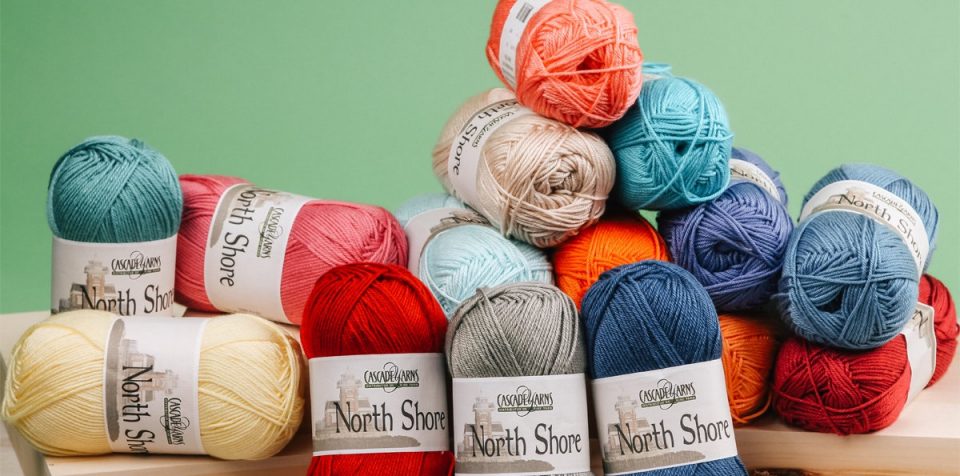The Merino wool yarn has become popular now that it’s making its comeback in the outdoor and active enthusiast’s landscape. Along with its comeback is a debate on whether or not it is the best option when it comes to knitting and crocheting. But before we discuss that part, let me ask you this: What do you know about the Merino wool yarn? Below are some of the common things you probably already know:
- Merino wool is comfortable and soft
- It’s easy to wash
- It doesn’t smell bad
- It’s a little expensive, but it’s worth every penny
There are so many types of wool, and what makes each wool unique is their individual strand’s physical characteristics. The smaller their diameter, the finer it is. Finer wool is softer, but more expensive compared to coarser or large diameter wool.
If you’re on a knitting project using the Merino wool, then you must know why it remains the best material in a world where every piece of garment is meticulously created for a purpose. Let’s go through the things you probably don’t know yet about the Merino wool yarn.
What is Merino wool yarn?
To put it simply, the Merino wool is the natural fleece or fiber that the Merino sheep grow. It’s the fluffy white stuff we consider the sheep’s fur or hair. The Merino sheep came from Spain in the 12th century. They were so precious that there was a ban on exporting them. In the 1700s, they lifted the ban and started breeding these sheep. This practice became popular in Australia, and the Merino sheep began to breed for their fine wool.
Today, they breed in the United States, South America, Australia, and New Zealand. They are quite expensive because of their super fine and super soft wool, which helps them survive foreboding climates where other sheep would fail to survive.
The Merino sheep’s fleece is insulating during the winter season, and breathable in summer. It’s exceptionally lightweight, which makes it perfect for extreme weather conditions. This is the reason why their fleece is ideal in creating the best activewear and clothing.
Things They Didn’t Tell You About the Merino Wool Yarn
The Merino wool has amazing features. I’m sure you are familiar with the features, but when you’re using the Merino wool yarn on your knitting and crocheting project, you must know more about this wool. Below are things you probably haven’t heard of:
The Merino wool’s moisture management
The Merino wool manages moisture better than other types of fiber, which makes it perfect for base layers, technical gear, socks, and outerwear. When it comes to activewear, moisture management is very important. This is the ability of your clothing to wick and breathe to allow moisture to move from an area of higher humidity to an area of lower humidity.
The goal is to eliminate the moisture on your skin, and keep you comfortably dry as you heat up from the physical activity. The Merino wool fibers are ideally designed for this task, and they do it better than the other synthetic fibers, such as nylon and cotton.
The Merino wool yarn can absorb up to 30% its own weight in moisture and still feel dry, compared to most synthetics. Typically, they feel wet after absorbing less than 7%. Basically, wool has a scaly and waxy outer edge, which makes the fibers repel water while allowing moisture absorption to happen through the scale ridges.
The Merino wool’s cooling properties
The Merino wool is highly efficient at releasing body heat when you feel too hot, which makes it great for regulating temperature. As the fibers absorb and saturate more than 30% of the moisture, they begin to move the excess moisture toward the less-humid atmosphere, or the ambient air around you. This is what we call wicking, and it’s an important factor in any sportswear.
After the wicking process, the fibers need to be ready to desorb to release the moisture. This is what we consider the breathability component, and it plays an important role in the cooling process, as you continue to heat up from the physical activity.
When the moisture hits the less humid air around us, the Merino wool begins to release the trapped, moist vapor. Eventually, it evaporates or desorbs into the air around you, and you begin to cool through the process of evaporative cooling.
And while nylon and polyester wick moisture much in the same fashion, the Merino wool beats them in both wicking and breathability. That’s because of its ability to retain more moisture relative to its weight, as it continues to feel dry for a longer period. It can also absorb and desorb at the same time, so you will feel warm or cool while efficiently moving moisture away from your skin.
The Merino wool’s heating properties
As the Merino wool takes in moisture, a reaction takes place between the vapor and the cells of the fibers, and this releases heat. This is what helps the Merino wool yarn keep you warm. Through exertion, the body warms up and creates water vapor. And then, the wool begins to absorb and trap the moisture and the heat inside the fibers. So, instead of feeling clammy or wet, it makes you feel warm and dry.
If a piece of garment isn’t breathable enough, then it can never shed excess moisture fast enough, so the fabric becomes damp. This can make you feel clammy and cold against your skin.
And as you start to engage in physical activity, the evaporative cooling effects of the Merino wool will begin to speed up, to move as much moisture away from your skin as possible.
Because of the Merino wool yarn’s wicking and breathable properties, we can say that it’s as good as a summer outfit as it is a winter outfit. The Merino wool works across different temperatures. It can keep you insulated when you feel cold, but also make you feel cool when you feel dry.
Whenever you need to start a knitting and crocheting project, make sure to remember these things, and only use the Merino wool yarn. Check out Darn Good Yarn for the best deals this month, and start working on your project. Good luck!

